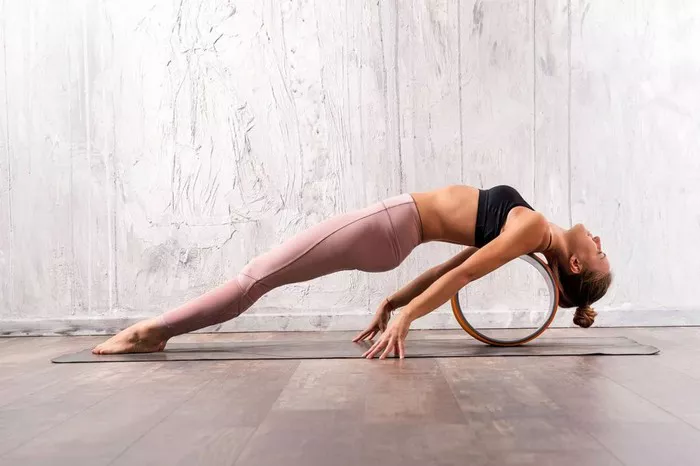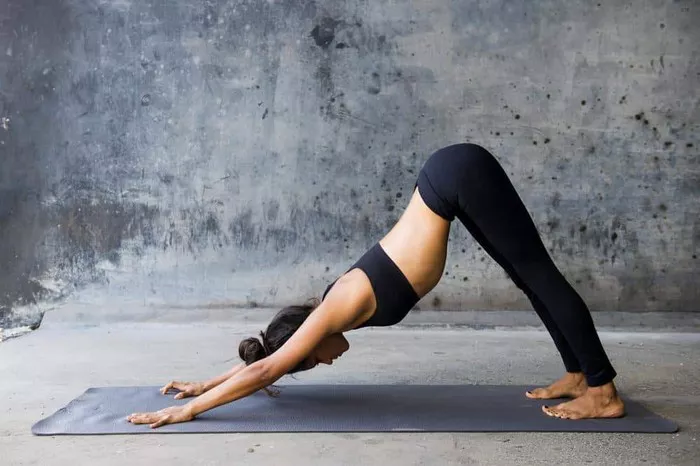Running is a physically demanding activity that requires strength, endurance, flexibility, and mental toughness. To achieve peak performance and minimize the risk of injury, runners must adopt comprehensive training routines that go beyond just running. One effective cross-training activity that has gained popularity among runners is yoga. But how often should runners incorporate yoga into their training schedule? This article explores the benefits of yoga for runners, provides guidance on how frequently to practice, and offers tips on integrating yoga into a running regimen.
The Benefits of Yoga for Runners
Yoga, an ancient practice that combines physical postures, breathing exercises, and meditation, offers numerous benefits to runners. Here are some of the key advantages:
1. Improved Flexibility
Running primarily uses the lower body muscles, often leading to tightness in the hamstrings, calves, and hip flexors. Regular yoga practice helps lengthen these muscles, enhancing overall flexibility and reducing the risk of injury.
2. Enhanced Strength
Many yoga poses, particularly those involving the core and lower body, build strength in muscles that support running. This includes not only the legs but also the core, which is crucial for maintaining proper running form and preventing injuries.
3. Better Balance and Stability
Yoga improves proprioception and balance, which can translate to more stable and efficient running. Poses that challenge balance help runners become more aware of their body movements and control, reducing the likelihood of falls and missteps.
4. Increased Mental Focus
Yoga incorporates mindfulness and meditation, which can enhance a runner’s mental focus and concentration. This mental training is beneficial during long runs or races, helping runners stay calm and focused under pressure.
5. Faster Recovery
Yoga encourages blood flow and circulation, which can aid in muscle recovery after intense runs. Gentle stretching and restorative poses help alleviate muscle soreness and accelerate the healing process.
6. Injury Prevention
By addressing muscular imbalances and improving flexibility and strength, yoga can help prevent common running injuries such as IT band syndrome, shin splints, and plantar fasciitis. The holistic approach of yoga ensures that the entire body is balanced and aligned.
7. Stress Reduction
Running, especially at competitive levels, can be mentally and physically stressful. Yoga offers a way to manage stress through breathing exercises and relaxation techniques, promoting overall well-being and reducing the risk of burnout.
How Often Should Runners Practice Yoga?
The frequency of yoga practice for runners depends on individual goals, running intensity, and personal schedules. However, general guidelines can help runners determine the optimal yoga practice frequency.
Beginners: 1-2 Times Per Week
For runners new to yoga, starting with one to two sessions per week is a reasonable goal. This frequency allows beginners to gradually adapt to the new movements and build a foundation of flexibility and strength without overwhelming their bodies. Short, 20-30 minute sessions focusing on basic poses and gentle stretches can be very effective.
Intermediate: 2-3 Times Per Week
Runners with some yoga experience can increase their practice to two to three times per week. At this stage, incorporating a mix of short and longer sessions, ranging from 30 minutes to an hour, can provide more comprehensive benefits. Intermediate runners can explore more challenging poses and sequences that target specific areas of the body used in running.
Advanced: 3-5 Times Per Week
Experienced runners who are well-acquainted with yoga can practice three to five times per week. Advanced practitioners can integrate a variety of yoga styles, including vinyasa, hatha, and yin yoga, to address different aspects of their running performance and recovery. These runners can also tailor their yoga practice to complement their running schedule, using yoga as a tool for both recovery and strength training.
Tailoring Yoga to Running Schedules
The frequency of yoga practice should also consider the runner’s training and racing schedule. Here are some tips on how to incorporate yoga into different phases of a running plan:
Off-Season
During the off-season, when running mileage and intensity are typically lower, runners can use this time to focus on building a strong yoga practice. Practicing yoga three to five times per week can help address any muscular imbalances, improve flexibility, and enhance overall strength, preparing the body for the upcoming training season.
Base Training Phase
In the base training phase, runners gradually increase their mileage to build a solid foundation. During this period, incorporating yoga two to three times per week can support the gradual increase in running volume. Focus on poses that enhance flexibility and strength, particularly in the lower body and core.
Peak Training Phase
During peak training, when running intensity and mileage are at their highest, yoga can help with recovery and injury prevention. One to two gentle yoga sessions per week can aid in muscle recovery and relaxation. Restorative and yin yoga practices are particularly beneficial during this phase, as they emphasize deep stretching and relaxation.
Tapering Phase
In the tapering phase leading up to a race, runners reduce their mileage to allow the body to rest and recover. Incorporating yoga two to three times per week during this period can help maintain flexibility and reduce pre-race anxiety. Gentle and restorative yoga practices are ideal for keeping the body limber and relaxed.
Post-Race Recovery
After a race, yoga can be instrumental in the recovery process. Gentle yoga sessions focusing on stretching and relaxation can help alleviate muscle soreness and promote healing. Practicing yoga two to three times per week in the days following a race can facilitate a quicker recovery.
Types of Yoga for Runners
Not all yoga styles are the same, and different types can offer varying benefits to runners. Here are some yoga styles that are particularly beneficial:
Hatha Yoga
Hatha yoga is a gentle style that focuses on basic poses and breathing exercises. It’s an excellent choice for beginners and for recovery days, as it helps improve flexibility and relaxation without overly taxing the body.
Vinyasa Yoga
Vinyasa yoga involves flowing sequences of poses linked with breath. This style can be more vigorous and is great for building strength and endurance. It’s suitable for intermediate and advanced practitioners looking to enhance their overall fitness.
Yin Yoga
Yin yoga focuses on deep stretching and holding poses for extended periods, typically three to five minutes. This style targets the connective tissues and is excellent for improving flexibility and joint mobility. Yin yoga is ideal for recovery days and for runners looking to increase their range of motion.
Restorative Yoga
Restorative yoga uses props to support the body in passive poses, promoting deep relaxation and stress relief. This style is perfect for recovery and tapering phases, as it helps reduce muscle tension and mental stress.
Power Yoga
Power yoga is a more intense and fitness-oriented style that builds strength and stamina. It’s suitable for runners who want a challenging workout that complements their running training. Power yoga sessions are best reserved for days when the running workload is lighter.
Integrating Yoga into a Running Routine
Successfully incorporating yoga into a running routine requires careful planning and consideration of individual needs and goals. Here are some practical tips for integrating yoga into a running schedule:
1. Schedule Yoga Around Running Workouts
Plan yoga sessions around running workouts to avoid overtraining. For example, schedule more intense yoga sessions on days when running mileage is lower, and opt for gentle, restorative yoga on high-mileage or intense running days.
2. Listen to Your Body
Pay attention to how your body responds to yoga and running. If you feel overly fatigued or notice signs of overtraining, adjust the frequency and intensity of your yoga practice. Yoga should complement running, not hinder it.
3. Use Yoga for Warm-Ups and Cool-Downs
Incorporate short yoga sequences into your warm-up and cool-down routines. Dynamic yoga poses can serve as an effective warm-up to increase blood flow and prepare the muscles for running. Gentle stretching and relaxation poses are ideal for cooling down and aiding recovery.
4. Focus on Key Areas
Tailor your yoga practice to address areas that are particularly prone to tightness or injury from running. For many runners, this includes the hamstrings, calves, hips, and lower back. Incorporate poses that specifically target these areas to enhance flexibility and reduce injury risk.
5. Practice Mindfulness and Breathing
Utilize the mindfulness and breathing techniques learned in yoga to enhance your running performance. Practice deep, diaphragmatic breathing while running to improve oxygen intake and reduce fatigue. Mindfulness techniques can help maintain focus and mental clarity during runs.
6. Stay Consistent
Consistency is key to reaping the benefits of yoga. Even if you have a busy schedule, try to incorporate short yoga sessions regularly. Even 10-15 minutes of yoga a few times a week can make a significant difference in flexibility, strength, and overall well-being.
Conclusion
Incorporating yoga into a running routine offers numerous benefits, including improved flexibility, strength, balance, and mental focus. The optimal frequency of yoga practice depends on individual goals, experience level, and running schedule. Beginners can start with one to two sessions per week, while more experienced runners can practice three to five times per week. Tailoring yoga to different phases of training and choosing the appropriate yoga styles can enhance performance and recovery, helping runners achieve their goals and maintain overall health. By making yoga a regular part of their training regimen, runners can enjoy a more balanced, injury-free, and fulfilling running experience.



















